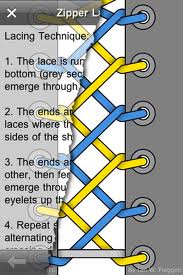 |
| Hold on, I'm looking it up. Photo: Flickr.com |
I listened with interest to a story featured on the Today show (1/26) claiming that more 9 year olds can use smart phone apps than can tie their own shoes.* Now, aside from a nod to the advent of Velcro this begs a look at the changes in the way children grow and view their world.
 |
| Who needs laces anyway? Photo: thisnext.com |
Most of the commentary I found on technology and kids takes a “tsk-tsk” tone, followed by panic driven, pessimistic reports of a future generation of detached, lazy, morally bent, impatient people. But I would like to explore the idea that technology can be a positive force in our children’s social, emotional and educational development, depending (as usual) on you.
Remember when we sledded down the middle of our street, played with sticks, and stayed out all day in the neighborhood? Our parents cautioned us to be careful, not to poke someone’s eye out and not to speak to strangers. When our kids are navigating the cyber world they still need to know that they can be hurt, hurt others and invite unwanted attention from strangers.
 |
| Creepy people are not a modern invention. Photo: dontletthemhurtourchildren.blogspot.com |
 |
| Things aren't always what they seem. Artwork: Spacecollective.org |
In schools, the National Association for the Education of Young Children and the Clearinghouse on Elementary and Early Childhood Education remind us not to let our children use technology in an adult-free vacuum. They see an enormous potential for technology in a child’s education as long as it is integrated into the child’s daily learning, with well-trained teachers and alert parents.
It is not productive to try to stop change, or our kid’s place in a changing world. The scariest part is the lag time for parents and educators to figure out that they too need to change. Think about all of the technologies that rose up in your lifetime. The desktop computer stands out, but what about blow dryers, insulated lunch boxes, microwave popcorn, dvds and hundreds of other innovations, large and small that have become a part of our daily lives? It was our generation’s responsibility to learn how to live and interact with these technologies, products and other people in a new environment. Now it is our children’s turn to explore, experiment, judge, and ultimately to determine what their world will look like.
 |
| What will they think of next? Photo:cheapmarts.net |
Teachers
Undergo training and fight to integrate technology into classroom curriculum. MySpace in the computer lab doesn’t count.
Promote cooperative efforts and personal interaction around technology projects. Design curriculum that forces kids to discuss their tech strategies face to face.
Parents
Facilitate personal interaction with other actual live children who are in the same room as each other.
Monitor tech activity for inappropriate content. You get to decide what inappropriate means, but I will give you a clue. It usually occurs online in your kid’s room after you are sleeping.
Continue learning new technologies as they become available so you can figure out what you don’t know.
Kids
Go out and play, wouldja?
 |
| Photo: unplggd.com |
Kids can’t tie their shoes but they can use technology with a comfort that ensures a very different world in our future. As parents we can help ensure that it is a world where people are connected by technological innovation, but also by human interaction. And probably lots of Velcro. As for their shoelaces, don’t worry. There’s an app for that!
 |
| Photo: macworld.com |
*As far as I can track down the story is from a report by Megan Gibson on Time.com about an AVG study.


















